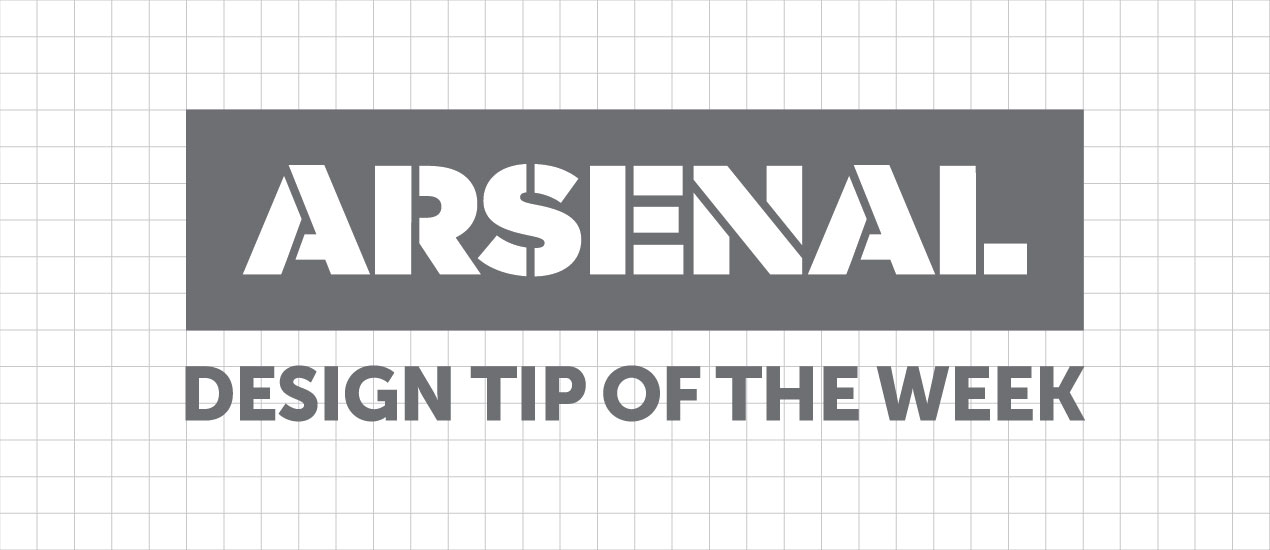Blog

Conceptualizing Through Questioning | Design Tip of the Week
Conceptualizing Through Questioning
Coming up with an idea can be difficult. Coming up with a GOOD idea is even more challenging. There are times when one faces a creative drought, when those AHA moments feel as if they are never going to happen and solutions are elusive. We’re left with that frustrating feeling of being “stuck.” But what if we focus less on finding answers and spent more time asking questions? For this Design Tip of the Week, I’d like to share the approach of conceptualizing through questioning.
We often ask practical, straightforward questions to determine situations and starting points in a design project. This includes figuring out the budget, timeline, audience, company history and goals. While figuring out these aspects help in sparking some ideas and providing direction for aesthetics, sometimes we still get stuck. When this happens, ask even more questions.
What is the medium?
How long will a person have to experience it?
What does it need to feel like?
Should it be masculine or feminine?
What do similar things out there look like? What is being done that is successful? What is not?
What associations people do have of ________?
What is too typical or cliché? How can I make it unique?
Is this boring?
Is this too strange?
Is this too simple? Is it too complex?
More specific questions can certainly help in making particular decisions. Say you are choosing a color palette for a new aromatherapy clinic. “What colors are relaxing, yet encouraging and supportive?” Another example: perhaps you’re having trouble picking a typeface for a new BBQ restaurant owned by a renown chef. You may want to ask yourself, “What typeface communicates the idea of being established, yet not too fancy in that the viewer feels they have to wear a suit and tie or elegant dress?” (After all, it is still a BBQ joint, and not, say, a French gourmet restaurant.) These questions keep us focused, reminding who and what we are designing for.
Boosting Imagination Through Questioning
There are times the right solution requires the strangest, most unorthodox approach. The new Old Spice commercials are a perfect example. They are absolutely fantastically random and hilariously imaginative, which resulted in a large increase of sales. How does one even come up with this stuff? Well, a great way to expand our minds into those inconceivable, brilliant territories is through, again, questioning. But not normal, pragmatic ones. I’m talking really weird questions, force-you-to-think-out-of-the-box-but-then-realize-there-is-no-box-and-that-your-imagination-has-the-potential-that-equates-to-a-space-whale-being-born-from-a-supernova-weird.
I stumbled upon this idea when I was sketching one morning at a coffee shop, however I was facing the problem of not knowing what to draw. I ended up doing some loose figural sketches. The one figure I drew had this strong, heroic pose, and for whatever reason, it sparked a strange question: “I wonder what this figure would look like as a deity of nature?” From there my imagination ran wild and I delved into more abstract concepts. “What would this figure look like if he was composed of a wood and iron?” I began visualizing gnarled, bark-like forms fusing with a mechanical, hard-edge appearance. I jotted down my thoughts, and from them I hope to create a new series of drawings.
I went from not knowing what to draw to coming up with a concept for a new body of artwork. And it all resulted from me asking just one, very weird and random question. Because what I was asking was so strange, my imagination was unhindered by obvious answers. Possibilities were endless.
I encourage you to try it out. Ask yourself ridiculous, bizarre questions. Your mind will launch an expedition of thoughts. Practicality and logic are of no concern. The more extraordinary the question, the better! Here are a few that I came up with:
How would you design a poster for an audience that is blind?
What if there was a device that could conduct positive emotions and use them to charge your cell phone? What would the device be called? What would the promotional campaign be?
If you had a robot companion, what functions would be programmed into it? Based off of those functions, what would its appearance be?
What would a computer keyboard look like if we had an extra finger?
What if umbrellas had hyper-efficient solar panels on them?
What would the mission statement be of a non-profit organization that had the ability to control weather forecasts?
Phew! This was quite a long Design Tip of the Week, so thank you for reading. Again, questioning can be extremely useful, from establishing aesthetic directions, helping make specific visual decisions and boosting one’s imagination. Remember, the answers and solutions will come. All you have to do is ask the right questions.
Cheers!

